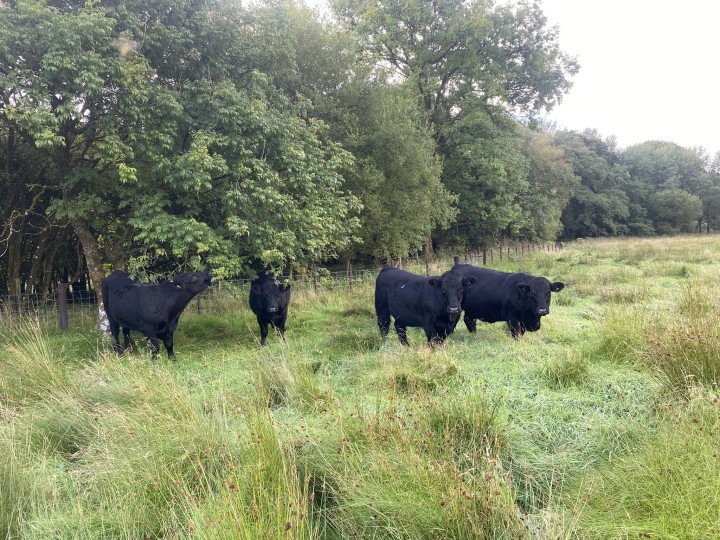On 25th November 2024, Huw Irranca Davies, the Deputy First Minister and Cabinet Secretary for Climate Change and Rural Affairs, announced an updated outline plan for the Sustainable Farming Scheme - the Welsh Government’s proposed new, long-term programme to support the agricultural sector. Rhys Evans, NFFN Cymru Manager, takes a closer look at the updates.
Designing a new domestic agricultural support scheme is no mean feat. Just ask the Welsh Government! The case for reforming farm support payments was presented to us back in Autumn 2018 with the Welsh Government’s Brexit and our Land consultation.
Fast-forward six years - in which there have been numerous consultations, inquiries, meetings and workshops - the Welsh Government (WG) has announced its latest Sustainable Farming Scheme (SFS) update. Is there light at the end of the tunnel? Before we answer that question, let’s look at the latest state of play.
Maintaining ambition
The WG’s aims for the SFS remain ambitious. The scheme still intends to deliver multiple outcomes and reward farmers for actions that align with Sustainable Land Management (SLM) objectives including:
Producing food in a sustainable manner,
Mitigating and adapting to climate change,
Maintaining and enhancing the resilience of ecosystems and the benefits they provide,
Conserving and enhancing the countryside and cultural resources; promoting public access to and engagement with them; and sustaining the Welsh language and promoting and facilitating its use.
These are all vital outcomes that agriculture can help deliver. Indeed, I’m struggling to think of any other sector that can deliver so many multiple cross-cutting benefits. So how is the WG going to support farmers to help achieve all of this?
Scheme structure
The framework for the SFS will remain largely the same and will retain the three-layer structure of Universal, Optional and Collaborative actions.
Universal Actions: Mandatory actions that farmers will need to undertake to receive an Universal Baseline Payment.
Optional Actions: If farmers want to go above and beyond the Universal Actions, this Optional Layer will include a menu of actions that farmers will be able to choose from and receive payment for delivery (in addition to the Universal Baseline Payment).
Collaborative Actions: This layer will provide the opportunity for farmers to deliver action at a local, landscape, catchment, or national scale. It aims to support an increase in collaborative and partnership working between farmers, land managers, foresters, and others.
The SFS Universal Layer will be launched in 2026. The Optional and Collaborative Actions, which will offer the most in terms of delivering ambitious nature and climate benefits, will be introduced in phases throughout the transition period, scheduled to run between 2026 and 2029.
In the meantime, the WG will work with stakeholders to agree which priority Optional and Collaborative Actions will be made available at the start of the scheme in 2026. NFFN Cymru will be pushing hard to ensure that the most ambitious land management actions are included in the upper scheme tiers as soon as possible.
Universal Actions
The bulk of the changes relate to the Universal Layer. Here’s an overview of what the Universal Layer looks like following WG’s latest update. For a full overview of the updated proposals you can read NFFN Cymru’s Summary Paper.
Benchmarking
Continuous Personal Development
Soil Health Planning
Integrated Pest Management
Habitat Maintenance
Create Temporary Habitat on Improved Land
Designated Sites Management Plan
Hedgerow Maintenance
Woodland Maintenance
Tree Planting and Hedgerow Creation Opportunity Plan
Historic Environment
Animal Health and Welfare
There is also a rule covering the entire scheme that 10% of each farm should be actively managed as habitat for the benefit of wildlife alongside the production of food.
Those who have been closely following the SFS' development will notice the number of Universal Actions has been reduced from 17 to 12, with changes made to 10 of the dozen remaining.
The following Universal Actions have been removed. However, there will be opportunities to support these practices through the Optional Layer;
UA4: Multispecies cover crop
UA6: Managing heavily modified peatland
UA10: Ponds and scrapes
UA16: Good animal welfare (merged with Universal Action 15)
UA17: Good farm biosecurity (merged with Universal Action 15)
The Animal Health, Welfare and Biosecurity actions (UA15/16/17) have been merged into a single simplified Universal Action, while changes to hedgerow management requirements seek to achieve bigger and denser hedges through incremental cutting every two years or more.
NFFN Cymru broadly welcomes the SFS Universal Layer: it is considerably more ambitious than the previous land-based Basic Payments Scheme (BPS). There’s a lot of focus on gathering data, testing and measuring in the universal layer, which makes perfect sense as baselining is an essential first step to inform management and measure success. There’s a lot to be welcomed, including measures to enhance soil health, animal health and welfare, benchmarking, habitat maintenance and improved hedgerow management. However, we would expect the ambition of this layer to increase over time.
Habitat and nature
Thankfully, the WG has retained the requirement for 10% of farms to be managed as habitat alongside food production, which has been a key priority for NFFN Cymru. We have been increasingly frustrated by claims that this will reduce farm productivity and economic viability, and will result in taking 10% of land out of food production.
Habitats can include species rich grasslands, herbal leys, hay meadows, marshy grasslands, hedgerows and wood pasture, ffridd and unimproved hill land (to name a few) - all of which contribute towards food production in Wales.




